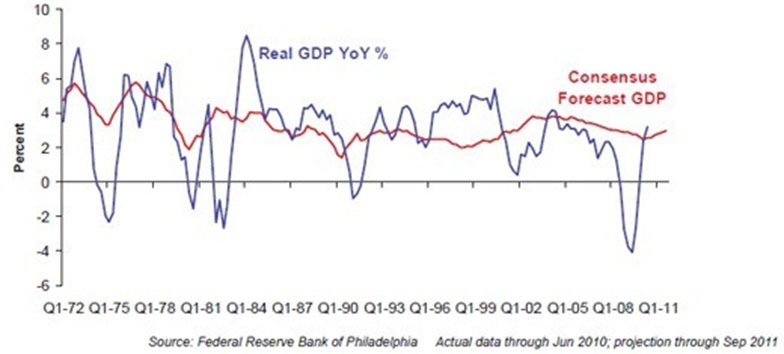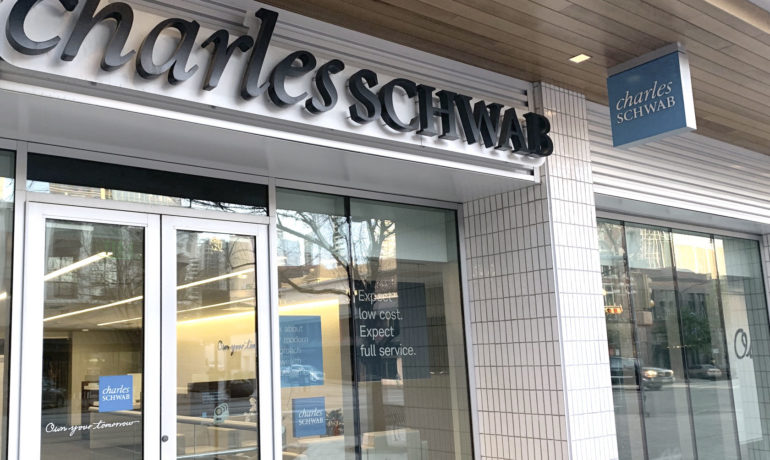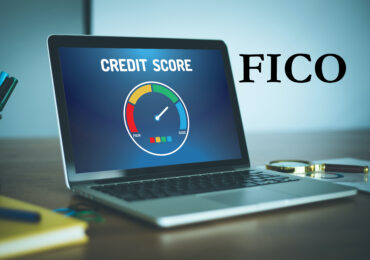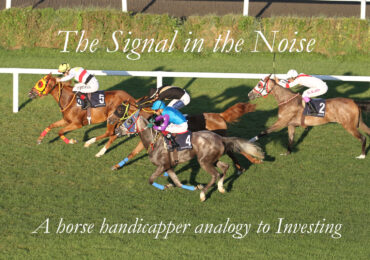In the first quarter, the S&P 500 index rose a meager 1.0%[1] as investors grappled with the implications of the topic du jour: government monetary policy and its impact on markets. As a result of the unprecedented easing in which almost all of the major central banks of the world have engaged since the Global Financial Crisis of 2008 and the clear impact this easing has had on markets, investors have, seemingly, become obsessed with divining central bankers’ next moves. They attempt to accomplish this feat of one part mind-reading and another part clairvoyance by endlessly parsing the speeches, written statements, and offhand remarks of these masters of our monetary fate, looking for clues such as a removed word here, a missing comma there, or an added phrase anywhere. Everywhere we look, commentators breathlessly pontificate on these “findings” and the resultant “obvious” impact on markets. We find these analyses useless at best and dangerously misleading at worst.
Clearly, the current level of interest rates is both relevant and fairly astounding in a historical context. U.S. 10-year Treasury yields declined to a 220-year low of 1.45% in July of 2012 and currently yield just 1.90%. Japanese 10-year government bond yields declined to a 140-year low of 0.20% in January of 2015. French 10-year government bonds are at their lowest level in at least 270 years at 0.36%. Excluding 1923-24’s volatile hyperinflation, German 10-year government bonds are at their lowest level in the past 200 years[2] at 0.07% and, similar to many European government bonds of shorter-duration, may actually go negative, meaning that investors would be paying the German government for the privilege of giving them a 10-year loan. And, lest you think this possibility inconceivable, in early April, Switzerland became the first government in history to sell benchmark government debt at negative interest rates.
Clearly, also, knowing whether U.S. rates will follow suit over the next couple of years or diverge and start heading back up matters greatly in determining what happens to stock prices. Since all asset prices are related, if 10-Year U.S. Treasury yields increased to 5%, Treasury bonds would compete more effectively with stocks for investment dollars than they do with yields at 1.90%, which could cause stock prices to go down or stagnate.
So far, we are in agreement with many of the interest rate prognosticators. However, we differ from them on one very fundamental point. They believe the future is knowable, or, more cynically but perhaps more realistically, they believe the public is gullible and will pay good money for their viewpoints, as long as they express them loudly and confidently. We, on the other hand, believe no one can predict the level of interest rates over the near, medium, or, perhaps even, long term. Fortunately, the evidence is on our side as unpredictability is endemic to all complex adaptive systems, and the economy satisfies all the conditions necessary to be classified as one. [3] Further proof of the economy’s unpredictability can be seen in one of our favorite charts:

As you can see, economists, whose full-time job is to study and model the economy, do an absolutely abysmal job of predicting even the overall GDP growth rate.
So, if you can’t predict, what do you do? As the renowned value investor Howard Marks famously said, “You can prepare,” [4] which leads us to our latest investment idea, a great company with strong competitive advantages and attractive growth potential that also helps protect our portfolio if rates rise faster than we or the rest of the world expect.
Charles Schwab: Creating Value for Customers and Investors
Recently, we accumulated shares of Charles Schwab, one of the largest brokerage, banking, and asset management firms in the United States, with over $2.4 trillion in client assets, almost 9.4 million active brokerage accounts, and nearly $96 billion in interest-bearing banking deposits. Other large firms in the industry include Fidelity with over $4.9 trillion in customer assets, Blackrock with over $4.3 trillion, Merrill Lynch with over $2.2 trillion, Morgan Stanley with over $2 trillion, Wells Fargo with $1.7 trillion, Goldman Sachs with almost $1.2 trillion, Capital Group with $1 trillion, TD Ameritrade with $653 billion, and E-Trade with $290 billion. The total industry size is probably best approximated by total U.S. household assets of $95.4 trillion, including total financial assets of $66.8 trillion.
In an industry full of firms focused on extracting as many fees as possible from clients, both through high transaction fees and through advisors’ pushing of expensive internally managed products, Schwab stands out from the crowd as a result of its laser-like focus on low-cost, technologically superior, and transparent financial product offerings. This approach has turned Schwab into an asset gathering machine, enabling it to grow assets since the end of 2006 at 9% per year, made up of 6.7% in new client asset growth and 2.3% in asset appreciation. Impressively, this growth rate includes the Global Financial Crisis of 2008. We believe Schwab’s advantages remain firmly entrenched even today, with many traditional brokers (representing tens of trillions of dollars of client assets) still charging hundreds to even thousands of dollars per trade, offering maddeningly buggy and inferior trading and administration platforms (we’ve tested them), and continuing to be financially incentivized to put clients into their own firms’ most expensive and complex offerings. Thus, we believe it’s likely Schwab will continue to grow new client assets at comparable rates to the past. If the next five to ten years don’t include a global financial crisis and the asset appreciation component grows faster than the 2.3% cited above, then Schwab may even be able to grow assets at 10% or more per year. Since its business model is much more technological in nature with far less leakage to high-priced stockbrokers, Schwab’s cost structure is more fixed than most brokerage firms, resulting in total costs as a percentage of assets having fallen from 22 basis points in 2006 to 15 basis points in 2014. This fixed cost structure should enable Schwab to grow earnings at an even faster pace than the 8 to 10% revenue growth rate we expect. Even at today’s valuation of 25x next year’s earnings, we believe we’ll do well over time given Schwab’s compelling business model and potentially rapid future earnings growth. However, we believe the investment case for Schwab is far better than the one presented thus far because much of Schwab’s earnings power remains latent due to artificially low interest rates.
In 2014, Schwab made 41.8% of revenues from asset management and administration fees, 37.5% from net interest revenue, 15.0% from trading revenue, and 5.7% from other revenue sources. Schwab is under-earning in both the asset management and administration fee category and in the net interest revenue category. First, in the asset management and administration fee category, a substantial portion of this revenue is generated from fees Schwab charges on its proprietary money market funds. Currently, because interest rates are so low, Schwab is rebating a large percentage of these fees back to clients. If short term interest rates were to return to 2006 levels of roughly 5%,[5] Schwab could completely cease giving these rebates, resulting in approximately $0.40 of additional earnings per share, a huge increase relative to the current 2015 Wall Street consensus earnings estimate for Schwab of $1.10.
Second, in the net interest revenue category, Schwab generates income by using the deposits of its banking clients and the residual cash of its brokerage clients to make margin, mortgage, and other types of loans to its clients. In addition, it invests some of this money into corporate, government, and asset-backed debt securities. It then makes a spread on the difference between the rate of return it receives on investments and loans and the rate of interest it must pay out to its depositors and brokerage clients. In 2014, Schwab lent out and invested its money at a weighted average rate of 1.71% and paid its depositor and brokerage clients 0.07%, resulting in a 1.64% spread. In most interest rate environments, the spread that Schwab can make is much larger. In 2006, for example, Schwab could lend money in a low risk manner and still earn a weighted average rate of 6.16%. However, because many clients 1) have nominal amounts of money in their banking and brokerage accounts, 2) value the liquidity of these accounts, 3) don’t want to go through the hassle of switching banks, and/or 4) value the safety and security of Schwab or other reputable big institutions, many customers will accept less than the risk-free short-term rates of interest on their money. In Schwab’s case, during 2006, it paid a weighted average 1.98% to its depositors and brokerage clients. Thus, Schwab earned a net interest margin of 4.18%. If interest rates returned to 2006 levels and remained there, Schwab’s net interest margin would increase substantially over time, possibly eventually to a rate around the 4.18% it earned in 2006. (Side note: Because the deposits and brokerage client cash are all variable rate and the investments and loans that Schwab makes are a combination of fixed rate and variable rate, some with durations of over 10 years, we estimate that, if short-term risk free rates went to 5% tomorrow and stayed there, net interest margin would expand by 20-30 bps immediately and then keep expanding up to the 4% level over the next 5 to 10 years as the longer duration securities mature.) The magnitude of this expanding net interest margin impact is very large. If Schwab’s 2015 net interest margin were 4.18% instead of the current 1.64%, it would earn an additional $1.80 per share, and this potential earnings impact will grow over time at a rate roughly in line with the growth rate of Schwab’s deposits and brokerage client cash. Overall, combining both the money market fee waiver and the net interest margin effects, we believe Schwab’s 2015 “earnings power” in a higher rate environment is approximately $3.30 versus the $1.10 Wall Street consensus earnings estimate.
In our base case scenario for Schwab, we believe the company can continue to grow client assets, deposits, and total revenues at 8-10% a year and earnings at 10-13% as a result of ongoing fixed cost leverage, even with short-term interest rates at zero. Then, as interest rates rise, the money market fee waivers should subside relatively early on and, combined with the slow increase in net interest margin, should provide an immediate 20-40% boost to earnings per share. The 2016 Wall Street consensus earnings estimate of $1.57 per share implies this sort of immediate impact. Thereafter, we believe earnings per share will continue to increase by the 10-13% organic rate with an additional 5-20% continued growth boost from rising interest rates, depending on how fast and how high they climb. If net interest margin were to increase to 4% over the next 8 years, we believe Schwab could earn over $6.00 in 2023. At a valuation of 15x earnings (versus 25x today), Schwab’s stock price would compound at an 18-19% yearly rate, including an estimated 2-3% from dividends or share repurchases. If interest rates don’t increase at all over the next 8 years but we’re right about the rest of our assumptions, we’d still compound at 8-9%, including 1% from dividends, at a 20x earnings multiple.
Given that we’re value investors, we can’t talk about the upside without also talking about the downside. The major downside risk would be a big stock market rout. In a repeat of the Global Financial Crisis of 2008, we estimate Schwab’s earnings could fall from the projected amount of $1.10 to $0.90, which is a far cry from the impact at that time (earnings went from $1.06 in 2008 to $0.38 in 2010 even though client assets rose by 9% and client deposits plus brokerage receivables rose by 139% from the end of 2007 to the end of 2010). The increased robustness on the downside reflects the fact that the largest negative pressure on earnings from 2008 to 2010 was the relentless decrease in interest rates and its enormous impact on net interest revenue and money market fees. Since short-term and long term rates have both been low for so long, we believe an incremental impact from a stock market crash on these two categories would be fairly benign. A Japanese-style deflation could cause significantly more earnings pressure, but we believe the probability of such an occurrence is low given the size, diversity, and innovativeness of the U.S. economy as well as the much more favorable demographics of the U.S. population. We also believe Schwab’s earnings multiple may be more robust to the next market downturn because, in the last crash, there was a concern that the money market business would be destroyed by new regulations. Since that time, the Fed has come out with new regulations that leave the money market business intact.
The last potential way to achieve an attractive rate of return on Schwab is through a takeout. Goldman Sachs and many other investment banks have been experiencing significant pressure in their trading businesses, and we believe they’re also being outcompeted in their wealth management businesses by Schwab. Thus, we give some credence to the intermittent speculation that Goldman or another investment bank may make a buyout offer, and we think founder Charles Schwab’s age increases the probability he would accept an offer if it were high enough.
Finally, as alluded to earlier, Schwab serves as a great hedge for the rest of our portfolio, which is predominantly comprised of market dominant consumer staple, toll-taker, and/or utility-like businesses. We believe these stocks should perform well in most economic environments and do particularly well relative to the market during periods of deflationary, downward shocks. However, in periods of stagflation or in environments of steadily rising interest rates, these stocks, along with almost every other asset class, will experience some pressure on their earnings multiples as the discount rate people use to value them goes up. Schwab, on the other hand, has explosive earnings upside in a period of rising interest rates, and thus we believe its stock price is also likely to do very well in such an environment.
Concluding Remarks
As investors right alongside you, we will continue to focus on what matters. Since we cannot predict the future, we will instead prepare. In other words, we will continue to build up our library of great companies we would love to own at the right price, to expand our knowledge base on the companies currently in our portfolio, to learn more about decision-making biases and design systems to minimize the impact of these biases, and to be patient and objective as we diligently seek out the best risk-adjusted expected returns for our portfolios.
We thank you for your trust and loyalty, and, as always, please never hesitate to call us if you have any questions or concerns. We are here to help.
Sincerely,
The YCG Team
Disclaimer: The specific securities identified and discussed should not be considered a recommendation to purchase or sell any particular security. Rather, this commentary is presented solely for the purpose of illustrating YCG’s investment approach. These commentaries contain our views and opinions at the time such commentaries were written and are subject to change thereafter. The securities discussed do not represent an account’s entire portfolio and in the aggregate may represent only a small percentage of an account’s portfolio holdings. These commentaries may include “forward looking statements” which may or may not be accurate in the long-term. It should not be assumed that any of the securities transactions or holdings discussed were or will prove to be profitable. Past performance is no guarantee of future results.
[1] For information on the performance of our separate account composite strategies, please visit http://ycginvestments.com/performance. For information about your specific account performance, please contact us at (512) 505-2347 or email [email protected].
[2] See http://corp.bankofamerica.com/documents/16307/0/longest_pictures.pdf.
[3] See http://en.wikipedia.org/wiki/Complex_adaptive_system.
[4] See http://www.oaktreecapital.com/MemoTree/2001_11_20 You Can%27t Predict.pdf.
[5] See http://www.moneycafe.com/personal-finance/fed-funds-rate-history/.




